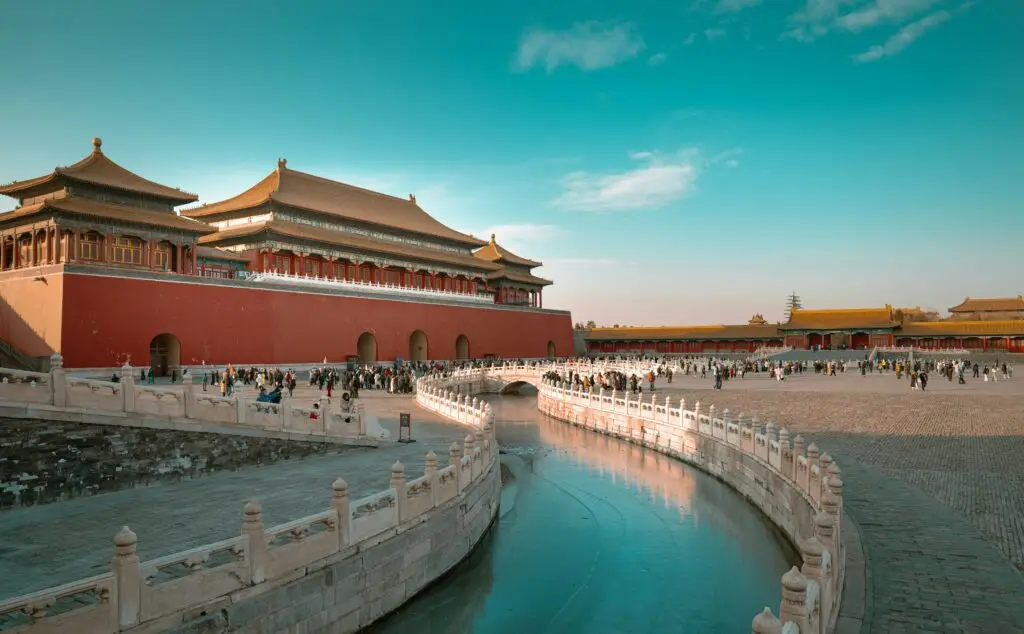Traveling through China is not only about breathtaking landscapes and ancient monuments, but also about discovering the everyday spaces where people have lived, worked, and celebrated together for centuries. Folk and communal architecture is where culture and life meet—humble yet ingenious designs that tell stories of families, traditions, and shared identities. Exploring these places feels less like sightseeing and more like stepping into a living museum, where walls, courtyards, and bridges are still alive with community spirit.
One of the most extraordinary examples is the Tulou of Fujian, massive circular earthen buildings created by the Hakka people. At first glance, they look like fortresses rising from the fields, with their thick rammed-earth walls designed for defense. But inside, they open into wide communal courtyards surrounded by rings of wooden balconies and family dwellings. Each Tulou could house dozens of families, functioning like a self-contained village. Standing at the center of one, you can imagine the rhythm of daily life: the aroma of shared kitchens, children playing under lanterns, elders chatting on wooden balconies. At night, when every window glows softly, the Tulou becomes a symbol of togetherness.
Further inland, in Kaiping, Guangdong, you find the Diaolou, multi-story fortified towers built in the 19th and 20th centuries. These hybrid structures blend Western decorative styles with traditional Chinese layouts, a result of returning migrants bringing influences from abroad. Walking among the Diaolou feels like entering a forgotten world of watchtowers and ancestral halls, where each building tells a story of migration, family pride, and resilience.
In northern China, especially in Beijing and Shanxi, the traditional Siheyuan courtyard houses embody Confucian ideals of harmony and order. Each courtyard is enclosed by walls, symbolizing privacy and protection, while the layout of rooms reflects the family hierarchy. Visiting preserved Siheyuan in old Beijing neighborhoods, you step through red wooden gates into tranquil courtyards shaded by ancient trees. Today, many have been transformed into boutique hotels, tea houses, or cultural spaces, giving travelers a chance to experience the elegance and intimacy of this architectural style.
Travel south to the lush provinces of Guangxi and Guizhou, and you’ll encounter the stilt houses of the Dong and Miao minorities. Built on wooden stilts to adapt to the mountainous terrain and protect against flooding, these homes perch gracefully over rivers and terraced fields. In Dong villages, you’ll also find magnificent drum towers—tall, pagoda-like wooden structures that serve as communal gathering halls. Covered bridges known as “Wind and Rain Bridges” connect paths and serve as social spaces, sheltering villagers and visitors alike. Walking through these villages, you might be welcomed with lush feasts, traditional singing, and vibrant dances, where architecture itself becomes a stage for community celebration.
In the far west, the stone houses of Tibet stand proudly against dramatic mountain backdrops. Built with thick stone walls and flat roofs, they are designed to withstand the harsh climate of the plateau. Many are adorned with brightly colored window frames and prayer flags fluttering in the wind, blending functionality with deep spirituality. Spending a night in a Tibetan village, you’ll notice how these homes are not just shelters but sacred spaces, tied to a worldview that honors the mountains, rivers, and skies.
Even in bustling cities, traces of folk communal spaces survive. In Sichuan, tea houses remain an integral part of daily life. Built as open wooden halls or shaded courtyards, they are filled with bamboo chairs, storytellers, and endless cups of jasmine or green tea. These are not tourist spots but living spaces where architecture and community meet—places to listen, talk, and simply be part of everyday life.
Exploring China’s folk and communal architecture reveals more than beautiful structures—it immerses you in the living culture of its people. Each style reflects adaptation to geography, climate, and community needs: earthen Tulou for security, stilt houses for mountain living, courtyards for family harmony, towers for protection, stone houses for survival. Together, they form a tapestry of human ingenuity and tradition.
When you walk through these spaces, you don’t just admire architecture—you feel the pulse of history and daily life still echoing through the walls. Whether it’s watching lanterns glow inside a Fujian Tulou, crossing a Dong wooden bridge at dusk, or sipping tea in a Sichuan teahouse, you step into the essence of China’s culture: rooted in community, harmony, and shared human experience.

